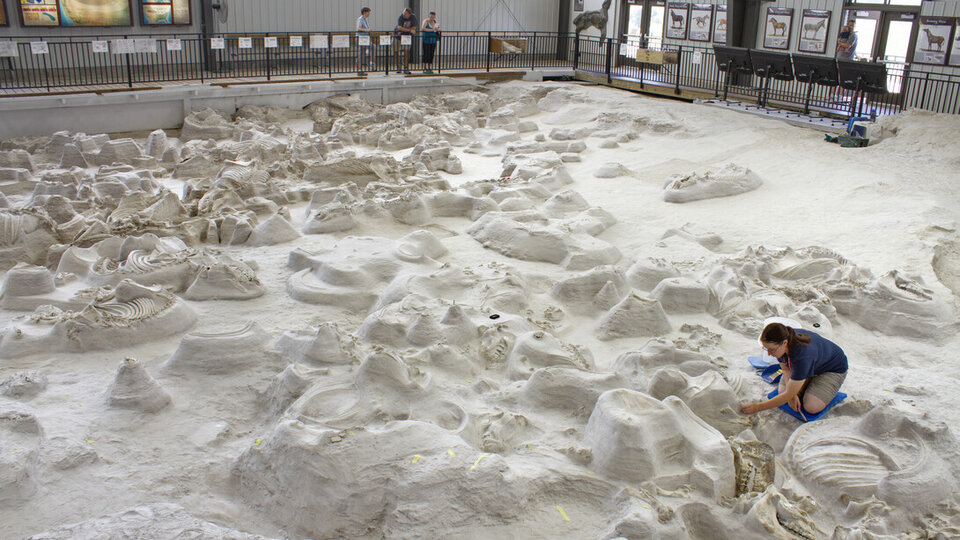Fossil Discovery Timeline
-
1991 - Rhinoceros, Teleoceras major
First skeletons uncovered in the Rhino Barn
-
1992 - Rhinoceros, Teleoceras major
Cow with calf positioned nose to nose
Horse, Cormohipparion occidentale
Remarkably complete skeleton
Camel, Procamelus grandis
Partial skeleton, discovered by Jennifer Tschirren
-
1993 - Rhinoceros, Teleoceras major
First skeletons uncovered in Rhino Barn
-
1994 - Horse, Neohipparion
Mare and foal
-
1995 - Rhinoceros, Teleoceras major
Volunteer Norma Brockmoller discovers cow rhino skeleton that is dubbed "Brockie"
Raccoon-dog, Cynarctus
Jaw
-
1996 - Horse, Neohipparion
Student Andria Skaff discovers fairly complete skeleton
-
1998 - Sabre-toothed deer, Longirostromeryx
Students Amy Allison and Melissa Mestl discover skeleton and meticulously reveal evidence of soft tissue preservation (muscle in neck and leg, visceral content)
-
1999 - Raccoon-dog, Cynarctus
Student Neil Gipson finds single tooth
Horned rodent, Mylagaulus
Sam Matson discovers fossil burrow in volcanic ash bed that is the right size for the horned rodent Mylagaulus. Sam also finds a milk tooth in the burrow hole.
-
2000 - Sabre-toothed deer, Longirostromeryx
Partial skeleton


